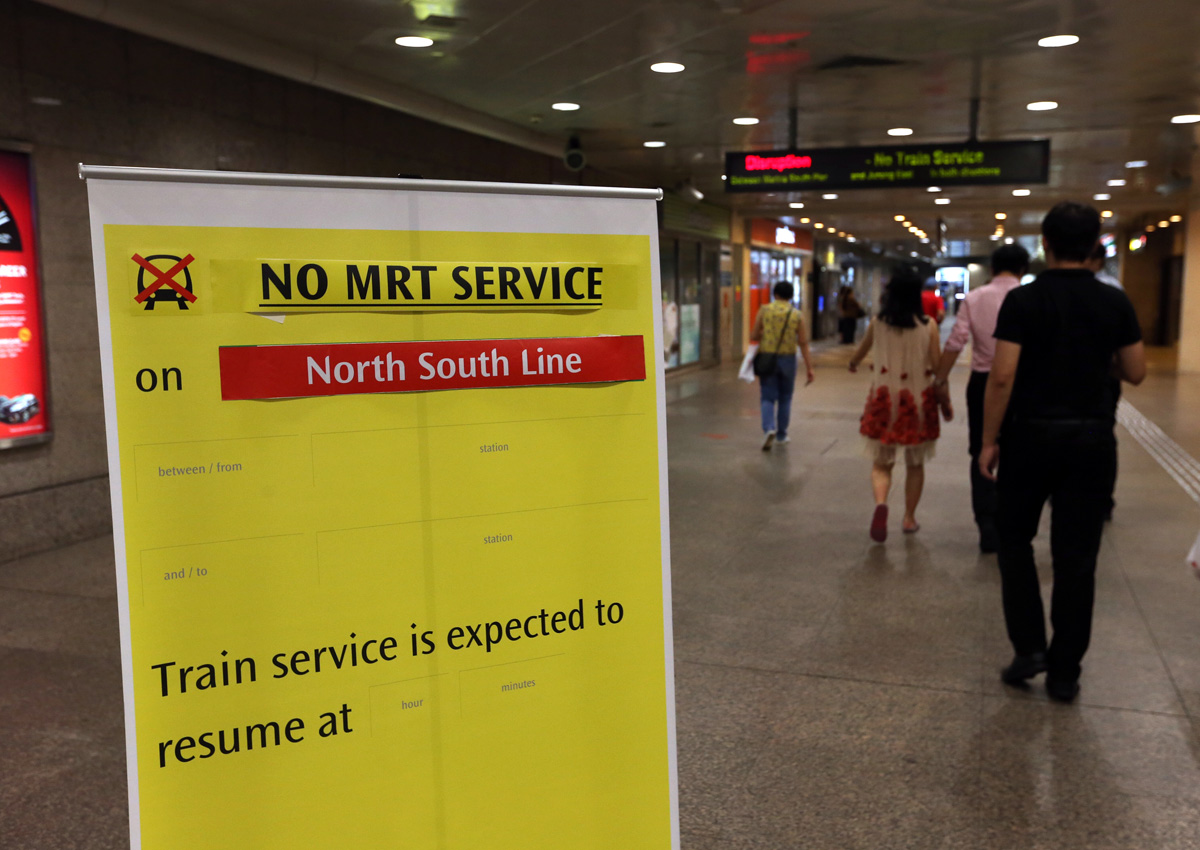A PANEL of electrical experts have made no fewer than 40 recommendations to make Singapore’s rail network more resilient.
Roped in four months ago, the panel of 13 experts – four of them from overseas – said these recommendations should be carried out as soon as possible to minimise power-related glitches – a major cause of rail breakdowns here.
The urgent recommendations include more frequent inspections of assets and replacement of components, the Land Transport Authority said yesterday.
The panel also called for new monitoring technologies, and tighter control on manufacturers and contractors at the design and building stages.
For instance, the panel said the third rail of the North-South and East-West lines should be inspected every six months until it is replaced.
It added that components which are critical to operations should be replaced within five years of reaching the end of their lifespans.
The panel also recommended certain components, like switches and circuit breakers, be replaced with more reliable models.
It suggested exercises be conducted to test operational response measures, in case there is a repeat of previous power-related incidents – like the one on July 7 last year that paralysed the entire North-South and East-West lines.
For future MRT lines, the panel said measures must be in place “to ensure tighter specification and quality control on the contractors and manufacturers”.
It cited the Circle Line’s power cables, which failed within the first few months of operation.
The panel also recommended the use of new technologies, such as an intelligent fault identification system (iFIS) to pinpoint exact location.
It also called for “extensive usage of energy storage to ride through voltage dips”.
It added that online real-time thermal imaging equipment should be installed in substations to detect heat build-up in key components.
In recent months, circuit breakers had caught fire at an MRT station and the Bukit Panjang LRT line.
LTA said it would adopt all the urgent recommendations, adding that some are already in place in newer lines.
For instance, the Downtown and Thomson-East Coast lines were designed with iFIS, as well as devices which isolate power trips so that they do not affect an entire line.
Others, such as more frequent inspection of key components and timely asset replacement, were among recommendations listed by the 2012 Committee of Inquiry.
For the longer term, the panel called for a power system design that will have a downtime of not more than five minutes and, with which, full recovery can be obtained within 20 minutes.
christan@sph.com.sg

Get MyPaper for more stories.






